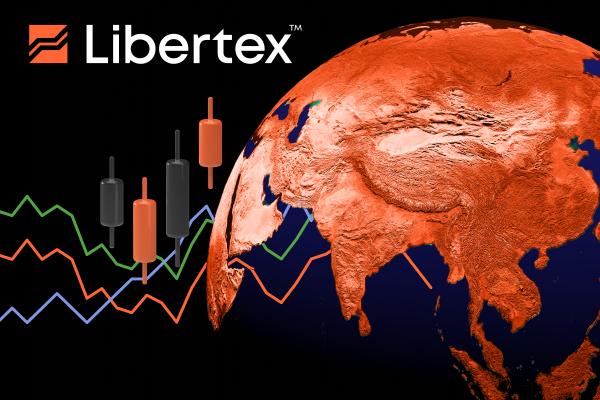Oil is the lifeblood of the global economy. Without it, goods cannot be moved or even produced; people cannot get to and from work or shops; and food cannot be farmed, packaged or transported. It's no coincidence, then, that the price of oil is directly correlated with economic health and prosperity. A prime example of this was in March 2020, in the wake of the COVID crash, when Brent prices turned virtually negative. Countries were locked down, factories shut, and domestic travel severely restricted. Of course, it was basic supply and demand. Nobody needed fuel, so its price collapsed. But as the caveat of one famous expression states, "what goes down must also come up".
After two years of yoyoing in lockstep with pandemic policy and supply-side pressures, oil appears to be levelling out, with the market leader Brent now standing at around $82.30 per barrel (27/02/2023). However, this is still well above the ten-year average and — with above-target inflation and a general climate of uncertainty — it represents serious headwinds for the manufacturing and transport sectors, as well as the wider economy. As central banks continue to raise rates and oil-producing nations look to balance demand and supply, 2023 is shaping up to be a key year for this energy resource. Now, without further ado, let's look at what is causing the current price instability and try to predict the most likely movement for this crucial commodity going forward.
Demand choppy amid dismal data
The world still hasn't fully recovered from the coronavirus crisis of 2020. Things might seem as though they're back to normal, but the economic fallout of this unprecedented global black swan is still thick in the air. Rampant inflation caused by excessive quantitative easing during the acute phase of the pandemic is driving up all commodities, oil included. However, a side effect of this is diminished buying power and highly volatile consumer sentiment, which has meant manufacturers have had to adjust production regularly.
In fact, the typically linear durable goods orders chart was an uncharacteristic picture of ups and downs in 2022. Since February 2022, four out of eleven of the months studied showed a decline, with the four-month period from March to June marking the most consecutive rises of the year. Coincidentally (or perhaps not), it was during this same period that oil prices hit their June local maximum of over $120 per barrel. Meanwhile, the US ISM PMI has been in a steady decline from 58.6 to 47.4 over the same time frame, having spent the past three months below the key minimal level of 50. Unsurprisingly, oil's movement has virtually mirrored these two indicators, with Brent gradually having lost almost 35% since June. Whether the business climate will improve is yet to be seen, but if it does, we could then expect oil to rise.
Everything's cheaper in China
After lagging severely behind for much of 2022 following the CCP's much-criticised zero-COVID policy of sweeping lockdowns, which led to severe drops in oil consumption from both ordinary consumers and big industry, the situation appears to be normalising now in China. Analysts now predict the Asian giant's oil imports to hit a record high in 2023 amid increased transportation demand and the arrival online of new Chinese refineries. Indeed, OANDA senior markets analyst Craig Erlam has claimed that the optimism around post-corona China — the world's largest importer of oil — may have something to do with the gains we're seeing in crude.
China and India have become major importers of Russian oil amid Western sanctions, embargoes and price caps on the OPEC+ member. In India, too, government crude imports data hit a six-month high in January. Essentially, the geopolitical instability in Europe and the associated measures imposed on Russian oil has seen two markets emerge. As a result, Urals crude currently sits at around $49.70 a barrel, representing a hefty 40% average discount on Brent. For non-aligned countries like China and India, this is a huge boom that means that they are not only able to meet potentially high demand in 2023 but will also be able to save billions of dollars in transport and production costs. However, with Russia this week reducing its output, we could soon see both Urals and Brent rising in the short-to-medium term.
What do the technicals say?
Very much in line with the fundamentals we've already covered, the technical analysis is similarly mixed. Both Brent and WTI have conflicting signals, and it appears we will need to see a convincing move in one direction before any truly actionable signals will be forthcoming. The weekly and monthly charts for the US's big two crude varieties seem to range anywhere from sell to strong sell, though the MACD for both of these timeframes rather confusingly suggest that current prices represent a good deal for prospective long-term holders.
If, however, we move over to the daily, 5-hour and 1-hour charts, a completely different picture emerges. The number of indicators flashing Buy increases exponentially as we reduce the charts' timeframes. On the 1-hour, for instance, the RSI, MACD, ADX, CCI and Bull/Bear Power all recommend buying. As such, it would appear that day traders could certainly consider picking up both Brent and WTI at current levels. For longer-term investors, it might be wise to take a wait-and-see approach until we have some much-needed clarity on some of the fundamentals detailed above.
Trading CFDs on oil with Libertex
Libertex is an experienced CFD broker renowned for its low commission, tight spreads, and multi-award-winning trading app. Apart from CFDs on Forex, stocks and ETFs, Libertex also offers CFD positions in a wide range of energy commodities, including WTI Crude, Brent and Light Sweet Crude. Since Libertex allows you to open long or short positions in any of its tradable instruments, it doesn't matter which way you believe the market is headed. For more information or to open your own live account, visit www.libertex.org and join the ranks of Libertex clients worldwide.






